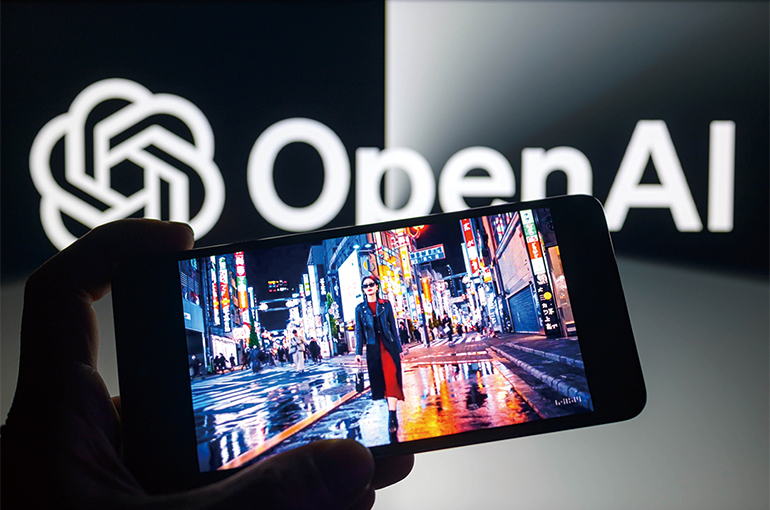 OpenAI’s Video Generator Sora Still Has Room for Improvement, Chinese Filmmakers Say
OpenAI’s Video Generator Sora Still Has Room for Improvement, Chinese Filmmakers Say(Yicai) Feb. 19 -- ChatGPT developer OpenAI’s new text-to video artificial intelligence tool Sora has generated a lot of interest in China’s film and television sector, but insiders say it is still weak in a number of areas, such as a lack of understanding of physical laws and logic, and cannot yet be used to create films and television series on its own.
It is not possible to use Sora to produce films or television programs because it is not refined and elaborate enough, a documentary filmmaker told Yicai. But it can be used in the early development stage, especially in concept and design.
Videos generated by Sora have good lighting and color, but they can only serve as a template for a director before filming, and are not sophisticated enough to be used to communicate visual concepts to clients when shooting a commercial, said Niu Mengchen, a director and founder of studio Mystery Novel.
Most AI-generated videos are not able to satisfy clients in terms of motion shots, and more advanced photographic requirements such as color, lighting, props and actors’ movements, Niu added.
Yann LeCun, Turing Award winner and chief AI scientist at Meta, said on X earlier this month that “the generation of mostly realistic-looking videos from prompts *does not* indicate that a system understands the physical world.”
After watching dozens of videos released by OpenAI, Yicai spotted several such instances, such as when a candle’s flame did not move when an old lady blew on it, when water in a glass flowed in the wrong direction after the glass was broken, and when a man was running in the opposite direction on a running machine.
Sora-generated videos have a high frame rate, indicating the model has strong computing capabilities, said photographer Meng Fan. In terms of intuition, the camera movement is natural and the consistency between shots is good, but the videos have poor logic, he added.
Sora still has issues with causal reasoning, said Cheng Weizhong, founder and chief executive of Beijing DeepScience Technology. This is a common issue for all similar models and it will get better as training is enhanced.
Editor: Kim Taylor